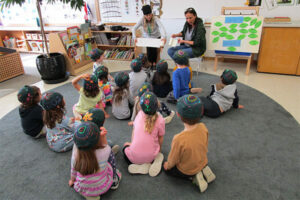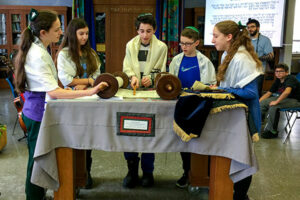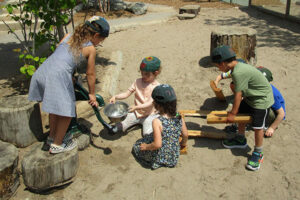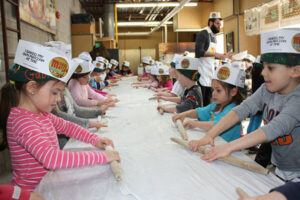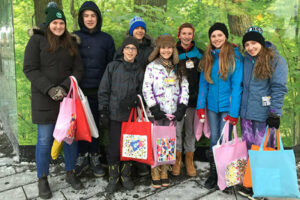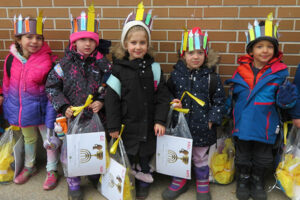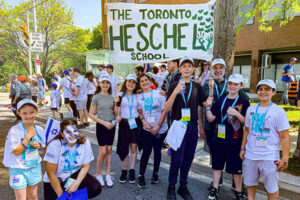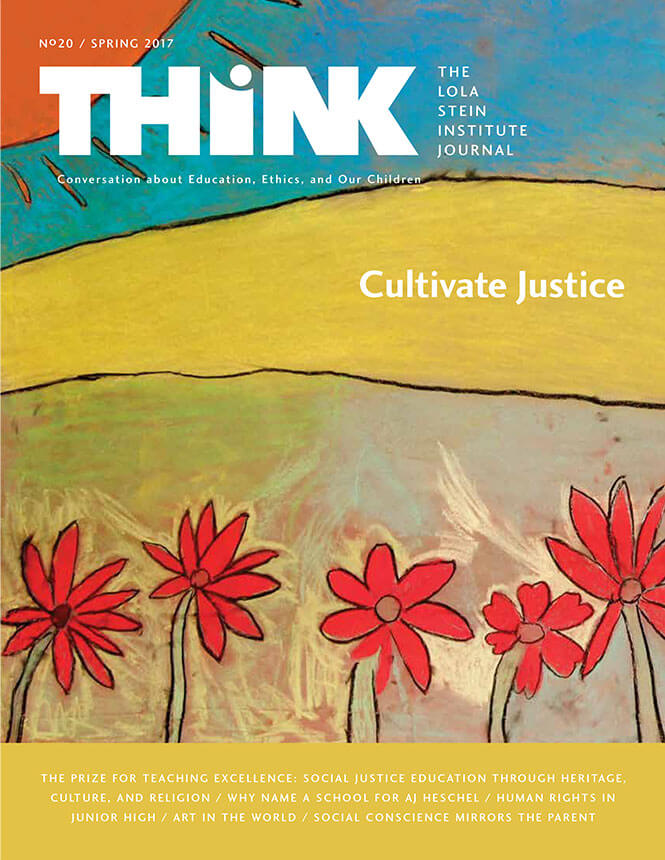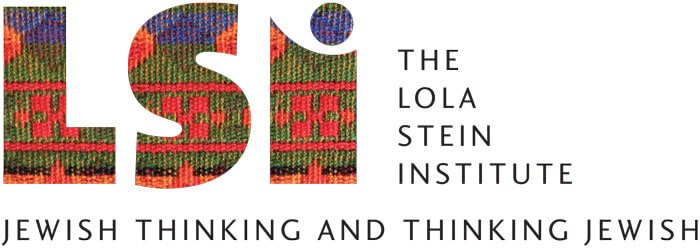- How We Teach

- First Column
- Second Column
- Third Column
- Case Studies

- First Column
- Second Column
- Culture & Community

- First Column
- Second Column
- News & Views

- Admissions

- First Column
- Second Column
- Support Us

- About

- First Column
- Second Column
- Parent Hub
- Attend an Open House
- Take a Tour
- Donate Now
- Calendar
- Blog
- 416-635-1876
- Search
Finding the Familiar in Grade 2
What Do We Have in Common?
I love teaching Grade 2. There is something amazing to me about the heart and mind of a seven year-old. By seven, children have a developed sense of empathy and understand what it means to be a part of a community. They have learned, in albeit simpler terms, that social justice is about being kind and thoughtful, about giving and sharing. By spring my students are eagerly starting to grasp the vastness of the world and to see the pursuit of social justice as an act of Tikkun Olam, the rabbinic term for repairing the world; each child is learning how individual actions can make the world a better place.
By Passover, my students are ready to explore their connection to the world beyond their immediate surroundings. Suddenly, the atlas —displayed on the shelf all year— becomes the most popular book in the class. With anticipation, the children discuss what country they want to study for their final research project on lives of children around the world. I love the energy when my students converse about the beauty of diversity and about their desire to do something good through their bond with children around the globe.
The research project has a title from the Book of Genesis: Etzem Mi’eztmi – Bone of My Bone: “And the Adam said: This is now bone of my bones, and flesh of my flesh” (2:23)
From their Chumash lessons over the years, the children know that in the text God takes a bone from the Adam and with it forms the Woman. They can now go deeper into the story. We ask, “What does it mean to you to think about the fact that the man and the woman were created from the same bone?” Their responses vary, but all agree that, while boys and girls are different, deep down we are very connected.
We revisit the Genesis text during social science lessons as we introduce concepts of race and ethnicity. We read a book about race and look at images of people of a variety of racial and ethnic backgrounds and we discover that people from different parts of the world look different. One group of students defined race as something God gives to us to make us special and to make the world more “colourful.”
The students literally feel the bones under their own skin, and—after asking nicely—under the skin of their friends. They conclude that beneath our skin we all feel the same; we are made of the same bone. “If we take off our skin,” I suggest (to a classroom full of “ewwws”), “would we not all look exactly the same?”
The next question is crucial, “What else do we share with children around the world?” To answer, we immerse ourselves for the next month in stories about children from Kenya, Malawi, Tel Aviv, and elsewhere. We explore their lives, their games, and the subjects they learn at school. We even make a soccer ball from plastic bags, guided by a video of a Kenyan boy doing the same.
The second graders then undertake individual research, choosing one country to study in detail. They notice that, while life in each place appears inherently different, the interests and dreams of children who live faraway are not so very different from their own here in Toronto. Through direct focus on what they have in common with other children, my students begin to sense a connection to people from different walks of life. This is my key to teaching social justice to young children. I help them find the familiar among the unfamiliar. With this feeling of connectedness comes compassion and the inspiration to create a just society for all.
Grade 2 students crave fairness and their research introduces the hard lesson that life is not always fair. They discover that a child who wants to attend school, just as they do, might be prevented if her family needs her help at home; children with dreams similar to theirs may not have equally similar privileges or the resources to make their dreams a reality.
We extend the lesson to our math classes and consider the concept of value; we discuss how value can be determined by a situation. We read Beatrice’s Goat, a picture book that tells the true story of a Ugandan girl who dreams of attending school, but whose family cannot afford to have her spend her days learning. When her family receives a donated goat, all this changes; they have milk to sell and at last her parents can afford to enroll her in school. After reading the story we discuss how valuable a goat can be to a child, who, like them, wants to learn. One group of second graders used the $60.00 they raised for their class tzedakah (charity) box to buy and donate a goat through the Save the Children Foundation.
Similarly, another Grade 2 class was inspired to act after seeing photos of Jewish day school students in Uganda. They saw torn mosquito nets dangling over the beds where the children, who were boarding, slept. By selling popsicles, our students raised enough to send new nets to the community. The nets cost $5.00 apiece but have lifesaving value as protection from mosquitos that carry the deadly disease of malaria. Months later, the Heschel class received a photo of the nets arriving and had a Skype conversation with Rabbi Gershom of the Abayudaya community and his seven-year-old daughter, who thanked the students personally for their contributions. The pride that the students felt was heart warming.
A seven-year-old craves and appreciates meaningful relationships, wants the world to be fair, yet can learn how this is not always the case. With pleasure and gusto, seven year-olds want to offer a helping hand to someone in need. At the Toronto Heschel School, Grade 2 students comprehend that the world is decorated with people who look and act differently. They also know that it is our responsibility to respect these differences and to celebrate and acknowledge the values, the hopes and the dreams that we all share.
Andrea teaches Grade 2 at The Toronto Heschel School.
PREVIOUS ARTICLE
Learning to Solve Real Problems at Ages 4 and 5Special Feature
Second PrizeTodd Clauer: Upper School Social Justice ProjectFirst PrizeErin Buchmann: Indigenous AwarenessA Report by Ruth BurnsteinThe Prize for Teaching Excellence 2016What Do We Have in Common?Finding the Familiar in Grade 2Our Sages Tell Us
A Mirror Reflection of UsThe Social Conscience of Our ChildrenColumns
An Interview with Dana EzerThe Jewish Foundations of a Junior High Human Rights CurriculumRecommendations for Children and the People Who Love ThemGood Books by Gail BakerPerspectives
 The Lola Stein Institute (LSI) is a centre of inventive educational thinking and addresses the challenge to re-frame schooling for the exigencies of our times.
The Lola Stein Institute (LSI) is a centre of inventive educational thinking and addresses the challenge to re-frame schooling for the exigencies of our times.

